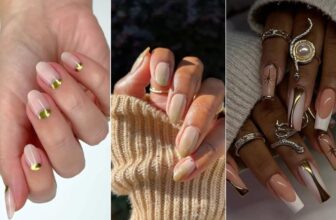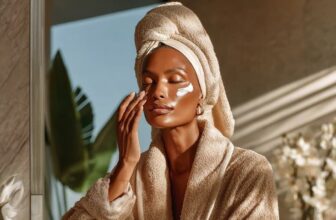The idea of achieving glossy and hydrated skin reminiscent of a slug’s trail might not be everyone’s immediate preference, but guess what’s currently trending in the world of skincare? “Slugging”. With its whimsical name, slugging might initially sound unconventional, but it’s quickly gaining popularity on TikTok and Instagram as a transformative skincare hack. This innovative technique, derived from the Korean beauty scene and later gaining attention on Reddit, involves a specific nighttime routine that harnesses the power of occlusives to lock in moisture and promote a dewy, supple complexion. Ahead, you’ll find a comprehensive overview of what you should know about slugging in skincare.
What is Slugging?
Slugging in skincare refers to a beauty hack that involves applying a thick occlusive moisturizer or ointment, such as Vaseline or any formula containing petrolatum, onto your face, as the final step in your nighttime skincare routine. The term “slugging” originates from the resemblance of the occlusive layer to a slimy trail left behind by slugs. This trend gained popularity, especially in the K-beauty community, for its potential benefits in preventing moisture loss and improving skin hydration.
How Does Slugging Work?
When you apply an occlusive moisturizer or ointment to your skin, it forms a physical barrier that locks in the moisture from the previous steps of your skincare routine. This can be particularly helpful for individuals with dry or dehydrated skin, as it helps to trap water and prevent it from evaporating from the skin’s surface. The occlusive layer also provides a shield against environmental aggressors, such as wind and dry air, which can contribute to skin dryness.
Benefits of Slugging Your Skin
- Hydration
Slugging is primarily known for its ability to provide intense hydration. The occlusive layer prevents water loss and keeps the skin’s natural moisture intact.
- Skin Barrier Protection
The occlusive layer acts as a barrier between the skin and external irritants, pollutants, and harsh weather conditions.
- Enhanced Product Absorption
By creating a seal over your serums and treatments, slugging can help these products penetrate deeper into the skin, maximizing their effectiveness.
- Softening and Smoothing
Many occlusive ingredients, such as shea butter and lanolin, are emollients that can soften and smooth the skin’s texture.
- Soothing
For people with irritated or sensitive skin, slugging can provide a soothing and comforting effect.
How to Embrace The Slugging Beauty Hack
- Cleanse and Tone
Start with a gentle cleanser to remove makeup, dirt, and impurities from your face. Follow up with a hydrating toner to prepare your skin for the next steps.
- Serums and Treatments
Apply any serums, treatments, or active ingredients that you normally use in your skincare routine. These products can address specific concerns like acne, hyperpigmentation, or fine lines.
- Moisturizer
Choose a thick, emollient moisturizer or an ointment that contains occlusive ingredients like petrolatum (Vaseline), lanolin, shea butter, or beeswax. These ingredients create a barrier on the skin’s surface, preventing water loss and sealing in the moisture from the previous steps.
How do you slug your face?
After applying your moisturizer or ointment, gently massage it into your skin to ensure even distribution. Avoid tugging or pulling on your skin. There are two methods for slugging: the overnight approach (traditional) or the short-contact method (similar to a wash-off face mask).
Slugging is best done at night since the occlusive layer can feel heavy and greasy during the day. This allows your skin to soak in the benefits without the inconvenience of a heavy feeling. In the morning, cleanse your face to remove the occlusive layer. Follow up with your regular morning skincare routine, which might include a cleanser, toner, serums, sunscreen, and makeup.
Who Should and Shouldn’t Try Slugging
Slugging can be beneficial for individuals with dry, dehydrated, or sensitive skin. However, people with oily or acne-prone skin might want to be cautious, as the occlusive layer can potentially exacerbate acne or cause breakouts. Additionally, those with allergies to specific ingredients should check product labels carefully and patch-test before using.
As with any skincare trend, results can vary from person to person. If you’re interested in trying the slugging technique, start by incorporating it into your routine gradually and see how your skin responds. If you notice any adverse reactions or discomfort, discontinue use and consult a dermatologist or skincare professional for guidance.
Photo: Pexels/Angela Roma






